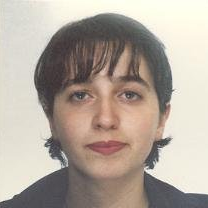Numerical Methods for Solving Fractional Differential Problems
A special issue of Fractal and Fractional (ISSN 2504-3110). This special issue belongs to the section "Numerical and Computational Methods".
Deadline for manuscript submissions: closed (31 December 2021) | Viewed by 3779
Special Issue Editors
Interests: splines; refinable and wavelet functions; approximation properties; applications to the medical field; to image reconstruction and / or compression; to the study of filters and to the numerical resolution of differential problems
Interests: multispectral image processing; instantaneous frequency estimation; multiscale analysis
Special Issues, Collections and Topics in MDPI journals
Special Issue Information
Dear Colleagues,
In recent decades, fractional calculus increased its popularity due to the awareness that many physical problems, such as viscoelasticity, Brownian motions, and so on, need fractional derivatives to be modeled. For some problems, there are analytical solutions. These are expressed through the Mittag Leffer function, which is a series expansion and thus needs to be computed with numerical tools. For this reason and for the other unsolved problems, the literature has identified many ways to numerically solve fractional differential problems. Many methods use finite difference for the integer derivative and the quadrature rule for the fractional one. Others use spectral or Galerkin methods. In recent years, the collocation method has also proved to be easy and efficient to implement. Many papers have proved that spectral, Galerkin or collocation methods can be particularly efficient and accurate when special functions are used. Using, for example, the B-spline functions, one can get a multiresolution analysis, i.e., a sequence of nested approximating spaces that cover L²(R). It should be emphasized that the fractional derivative of a B-spline is a fractional B-spline. In this Special Issue, of particular interest are the following subtopics:
- Fractional ordinary differential equations (FODE)
- Fractional partial derivative equations (FPDE)
- Collocation methods
- Galerkin methods
- Spectral methods
- Convergence analysis
- Fractional B-splines
Dr. Laura Pezza
Prof. Dr. Vittoria Bruni
Guest Editors
Manuscript Submission Information
Manuscripts should be submitted online at www.mdpi.com by registering and logging in to this website. Once you are registered, click here to go to the submission form. Manuscripts can be submitted until the deadline. All submissions that pass pre-check are peer-reviewed. Accepted papers will be published continuously in the journal (as soon as accepted) and will be listed together on the special issue website. Research articles, review articles as well as short communications are invited. For planned papers, a title and short abstract (about 100 words) can be sent to the Editorial Office for announcement on this website.
Submitted manuscripts should not have been published previously, nor be under consideration for publication elsewhere (except conference proceedings papers). All manuscripts are thoroughly refereed through a single-blind peer-review process. A guide for authors and other relevant information for submission of manuscripts is available on the Instructions for Authors page. Fractal and Fractional is an international peer-reviewed open access monthly journal published by MDPI.
Please visit the Instructions for Authors page before submitting a manuscript. The Article Processing Charge (APC) for publication in this open access journal is 2700 CHF (Swiss Francs). Submitted papers should be well formatted and use good English. Authors may use MDPI's English editing service prior to publication or during author revisions.
Keywords
- fractional OD
- fractional PDE
- numerical methods
- fractional B-splines
- convergence analysis






